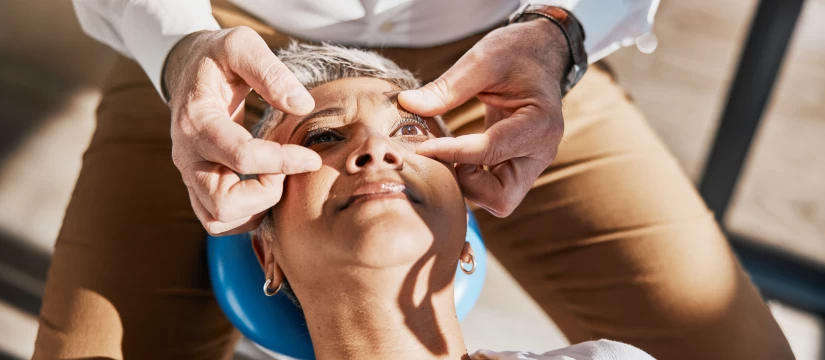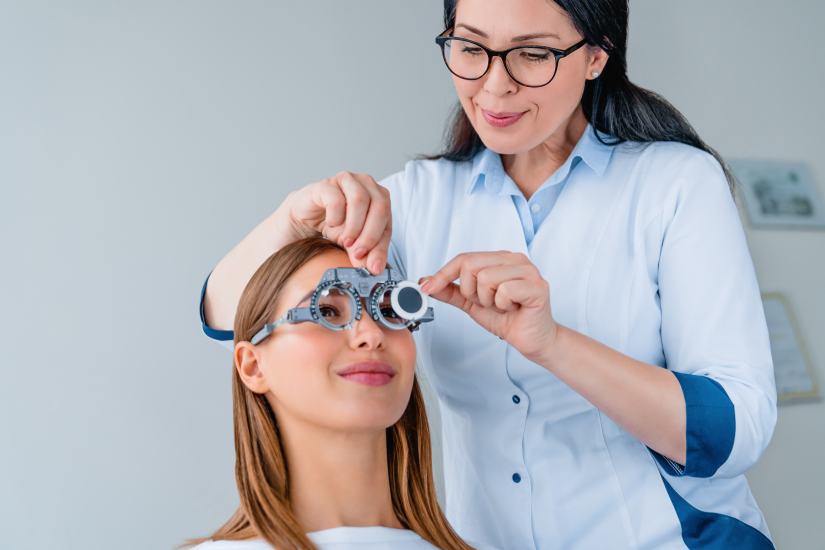LASIK and SMILE: Top Vision Correction Techniques in Turkey
For millions of people around the world, vision problems like nearsightedness (myopia), farsightedness (hyperopia), and astigmatism can significantly impact daily life. Thankfully, advancements in laser eye surgery have made it possible to correct these refractive errors with precision and efficiency. Among the most popular and effective methods are LASIK and SMILE, two cutting-edge vision correction techniques offered in many clinics in Turkey.
Turkey has emerged as one of the leading destinations for laser eye surgery, attracting patients from all over the world due to its high-quality care, affordable pricing, and the availability of advanced technology. In this article, we’ll explore LASIK and SMILE, the two most sought-after vision correction techniques in Turkey, and explain why they are regarded as some of the best options for vision correction.
1. LASIK (Laser-Assisted in Situ Keratomileusis)
LASIK is the most widely performed laser vision correction surgery in the world, and it has been a game-changer for people looking to eliminate their dependence on glasses or contact lenses. LASIK involves using a laser to reshape the cornea, which is the transparent layer of the eye that helps focus light onto the retina. By reshaping the cornea, LASIK improves the eye’s ability to focus light correctly, thereby reducing or eliminating the need for corrective lenses.
How LASIK Works:
- Corneal Flap Creation: A thin flap is created on the cornea using a femtosecond laser or a microkeratome (a mechanical device). This flap is lifted to expose the underlying corneal tissue.
- Reshaping the Cornea: An excimer laser is then used to reshape the corneal tissue, correcting the refractive error (nearsightedness, farsightedness, or astigmatism).
- Repositioning the Flap: After reshaping the cornea, the flap is carefully repositioned, allowing it to heal naturally without the need for stitches.
Why LASIK is Popular in Turkey:
- Proven Success: LASIK has been extensively studied and has a high success rate, with most patients achieving 20/25 vision or better after surgery.
- Minimal Downtime: LASIK surgery is quick (usually around 15 minutes per eye) and recovery is relatively fast. Most patients can resume normal activities within 24 to 48 hours.
- Advanced Technology: Clinics in Turkey use femtosecond lasers, which provide greater precision in creating the corneal flap, reducing the risk of complications and improving outcomes.
LASIK remains a go-to choice for many patients, and Turkish clinics are at the forefront of performing this procedure with the latest advancements in laser technology.
2. SMILE (Small Incision Lenticule Extraction)
SMILE is a newer, minimally invasive laser eye surgery technique that has quickly gained popularity due to its precision, reduced recovery time, and fewer complications compared to traditional LASIK. While LASIK involves creating a corneal flap, SMILE is a bladeless technique that involves removing a small piece of corneal tissue (called a lenticule) through a small incision, rather than creating a flap.
How SMILE Works:
- Laser Creates a Lenticule: Using a femtosecond laser, the surgeon creates a small, precise lenticule within the corneal tissue. This lenticule is the part of the cornea that is causing the refractive error (e.g., myopia or astigmatism).
- Extraction Through a Small Incision: A tiny incision (typically around 2-4 mm) is made in the cornea, and the lenticule is carefully extracted.
- Corneal Reshaping: With the lenticule removed, the cornea is reshaped, improving the eye’s ability to focus light correctly.
Why SMILE is Gaining Popularity in Turkey:
- Minimally Invasive: SMILE requires only a small incision, which leads to less disruption of the cornea, reducing the risk of complications such as dry eyes and corneal flap issues.
- No Corneal Flap: Since no flap is created in SMILE, there is a lower risk of complications related to the flap shifting or becoming dislodged, making it an attractive option for athletes and people with active lifestyles.
- Faster Recovery: Most patients experience faster visual recovery with SMILE compared to LASIK, and the risk of post-operative discomfort is lower.
- Ideal for Thinner Corneas: SMILE is often recommended for patients with thin corneas, as it doesn’t require as much tissue to be removed as LASIK.
Many clinics in Turkey now offer SMILE as an advanced alternative to LASIK, and its popularity continues to grow due to its safety, precision, and quicker recovery time.
3. Why Choose Turkey for LASIK and SMILE?
Turkey has quickly become one of the top destinations for laser eye surgery, offering both LASIK and SMILE procedures with exceptional outcomes. There are several reasons why Turkey is considered an ideal location for vision correction treatments:
Affordable Prices
Cataract and refractive surgeries such as LASIK and SMILE are significantly more affordable in Turkey compared to many Western countries. The lower cost of living in Turkey allows clinics to offer high-quality care at competitive prices, making it a budget-friendly option for patients from around the world.
Advanced Technology and World-Class Clinics
Turkey is home to some of the most advanced ophthalmology clinics in the world, many of which are equipped with state-of-the-art technology. Turkish clinics often use the latest femtosecond lasers, excimer lasers, and wavefront-guided systems for the most accurate and personalized treatment. Many clinics in Turkey are internationally accredited, adhering to the highest medical standards and patient safety protocols.
Experienced Surgeons
Turkish ophthalmologists are highly trained and have performed thousands of LASIK and SMILE procedures. Many surgeons in Turkey have received training and certifications from prestigious international institutions and stay updated with the latest developments in laser eye surgery.
Quick Access to Treatment
Unlike many countries with long waiting lists for elective surgeries, patients traveling to Turkey can usually schedule LASIK or SMILE surgery within days or weeks, minimizing wait times and allowing them to quickly benefit from improved vision.
Beautiful Recovery Environment
In addition to world-class medical care, Turkey offers a beautiful and relaxed environment for recovery. Whether you’re staying in Istanbul, Antalya, or one of the country’s other scenic regions, you can enjoy a peaceful recovery while exploring Turkey’s historical sites or relaxing by the coast.
4. What to Expect During LASIK and SMILE in Turkey
- Consultation and Pre-Operative Assessments: Before undergoing LASIK or SMILE surgery, patients will undergo a comprehensive eye exam to determine their suitability for the procedure. This includes measurements of corneal thickness, visual acuity tests, and an assessment of overall eye health.
- The Procedure: Both LASIK and SMILE are typically performed on an outpatient basis. LASIK surgery usually takes about 15 minutes per eye, while SMILE takes a little longer, as the femtosecond laser works to create the lenticule and make the small incision.
- Post-Surgery Care: Recovery time for LASIK is generally quick, with many patients experiencing improved vision within a day or two. SMILE patients tend to experience faster visual recovery, with less post-operative discomfort. Follow-up appointments are essential to monitor healing and ensure that the eyes are healing correctly.
 Clinic Booking
Clinic Booking



 No Record
No Record